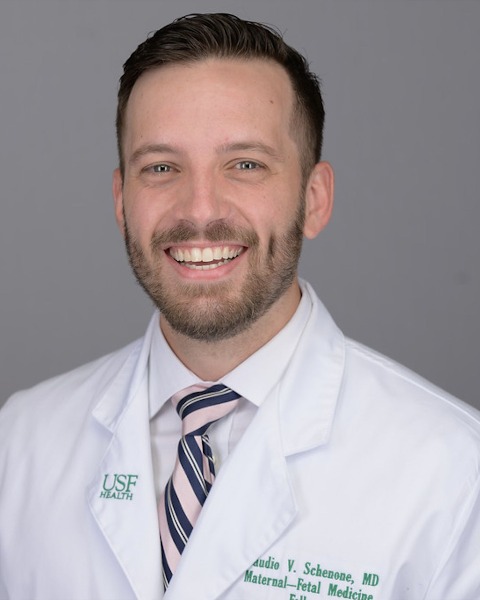Category: Physiology/Endocrinology
Poster Session I
(157) Myocardial oxygen consumption among low-risk pregnancies
Rate-Pressure Product (RPP) has been utilized in non-pregnant adults as a surrogate for myocardial oxygen consumption (MOC), a dynamic non-invasive index of changes in cardiovascular (CV) demand. We sought to describe pre-conceptional (PC), antepartum (AP), and postpartum (PP) RPP among low-risk pregnancies.
Study Design:
Retrospective longitudinal study of low-risk women 18-34 years old with one uncomplicated term delivery during the study period (2013-2022). Exclusion criteria included chronic medical conditions, multifetal gestations, and/or pregnancy-associated complications. Investigators searched the electronic medical record for sociodemographic characteristics, as well as PC, AP, and PP heart rate (HR) and systolic blood pressure (SBP) values. RPP was defined as the product of HR and SBP (HR X SBP) at each visit. RPP % change from the PC (baseline) value at each visit was obtained using the following formula: [(RPP value– PC RPP)/PC RPP) x 100)]. Mean and standard deviation for absolute and % change from baseline were calculated for RPP at PC, by pregnancy trimester, and PP (up to 6 weeks). A mixed linear model was used to ascertain differences in RPP over time. A p-value < .05 was considered statistically significant.
Results:
484 patients were included in our study. Data were normally distributed. Mean maternal age, BMI (kg/m2), and gestational age at delivery were 27, 25.4, and 39 weeks, respectively. 59% of the cohort was multiparous. The average number of months at the PC visit and weeks at the PP visit was 6 and 3.5, respectively. Absolute RPP significantly increased from PC levels during the second (p = .015) and third trimester (p = < .001) (Figure 1), with largest contribution from increases in HR. Differences in % change from baseline by trimester and during the PP period are presented in Figure 2.
Conclusion:
MOC as measured by RPP progressively increases with each trimester and returns to baseline PP following delivery among low-risk pregnancies. These results validate the transient but significant CV changes experienced during uncomplicated pregnancies.

Claudio Vittorio Schenone Giugni, MD (he/him/his)
Fellow Physician
Department of Obstetrics and Gynecology, University of South Florida Morsani College of Medicine
Tampa, Florida, United States- MC
Mary Cain, MD
Department of Obstetrics and Gynecology, University of South Florida Morsani College of Medicine
Tampa, Florida, United States - AT
Athanasios Tsalatsanis, PhD
Department of Internal Medicine, University of South Florida Morsani College of Medicine
Tampa, Florida, United States - AK
Ambuj Kumar, MD, MPH
Department of Internal Medicine, University of South Florida Morsani College of Medicine
Tampa, Florida, United States 
Judette M. Louis, MD, MPH
Department Chair
Department of Obstetrics and Gynecology, University of South Florida Morsani College of Medicine
Tampa, Florida, United States- DC
Daniela Crousillat, MD
Division of Cardiovascular Sciences, University of South Florida, Morsani College of Medicine
Tampa, Florida, United States

.png)
